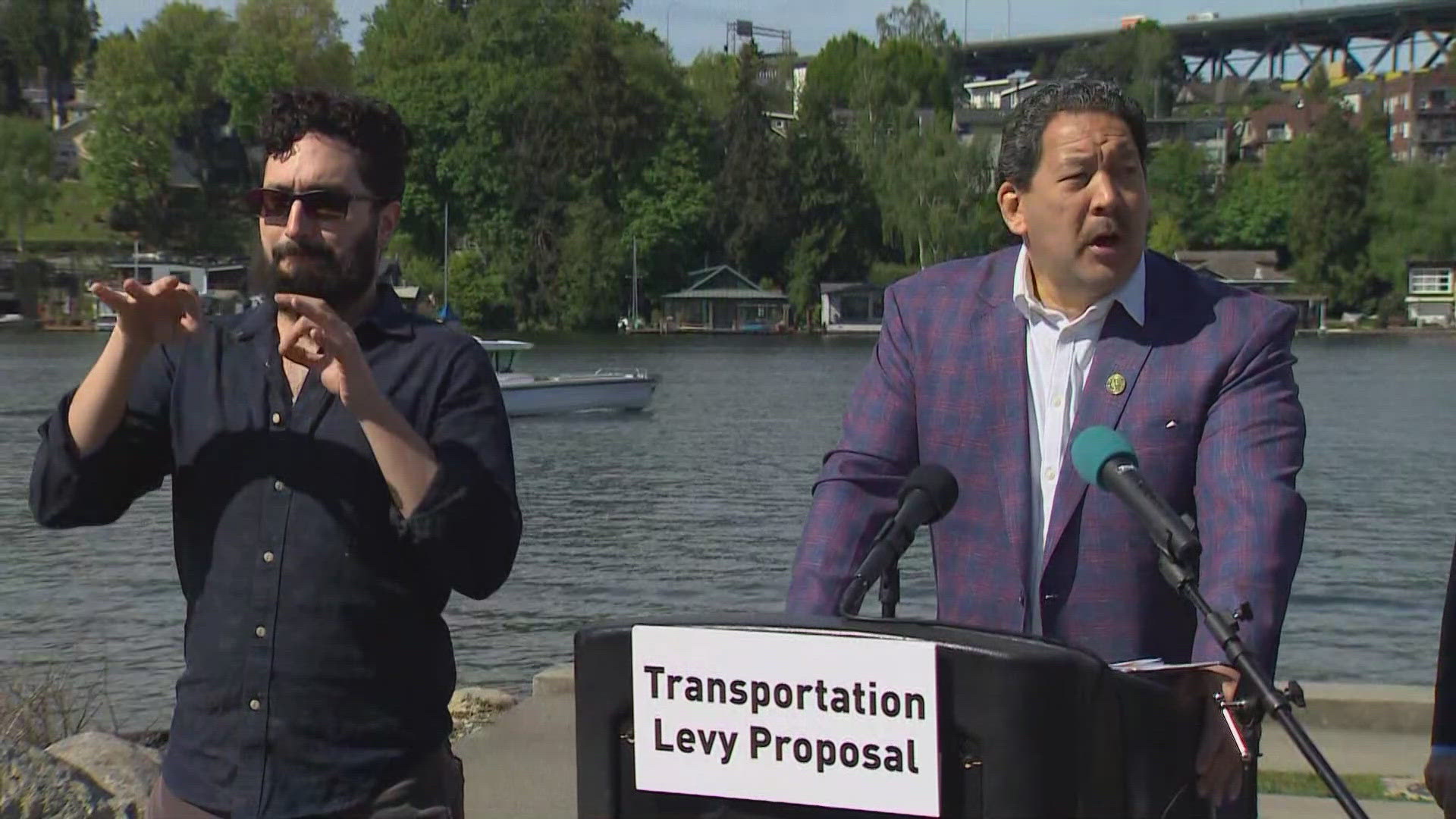SEATTLE — On May 3, Seattle Mayor Bruce Harrell released a new transportation levy proposal that would add an additional $100 million to his original $1.35 billion proposal released in April.
The eight-year, $1.45 billion levy proposal would allocate the additional money for what Harrell's office calls "top priorities raised by neighbors."
Those priorities include sidewalk construction and repairs, enhanced pedestrian and bicyclist connectivity to light rail stations, transit access and reliability, bridge maintenance and planning, and maintenance and modernization of Seattle's streets.
The proposed levy would replace the current levy, which expires at the end of this year. The current levy, which was $930 million, was passed in 2015.
The median homeowner in Seattle currently pays $24 per month for the levy and the proposed levy would increase the monthly payment to $41.
The levy will be voted on in November.
How the money will be divided
According to the levy draft, the largest amount of money, $423 million, would be spent on major street maintenance. That includes filling potholes, "significant and transformative" corridor improvements, curb and pavement markings and more.
Safety improvements around the city, especially near schools, would see $107 million. The city aims to reduce fatalities and injuries through improvements to roads, sidewalks, and intersections. Vision Zero, the city's plan to end traffic deaths by 2030, would receive a 150% increase in funding.
Under the new proposal, $221 million would be spent on bridge repairs, cleaning and maintenance.
Another $162 million would be used for safety improvements to streets, sidewalks and other infrastructure.
Transit corridors and connections would receive $145 million to connect people to transit hubs, including light rail stations and bus stops, as well as reduce delays on bus routes.
The city would spend $135 million on making sidewalks, crossings and curbs safer and more accessible for pedestrians.
A total of $114 million would go to increasing bike safety, creating more bike lanes that would connect more neighborhoods and build up to five new greenways.
Another $100 million would be used to install, maintain, and upgrade traffic signals. The proposed levy would also fund up to five pilot projects.
The city would spend $66 million on upgrading public spaces, including landscaping improvements, more lighting, and "improve the pedestrian experience."
The city would help address climate change with $59 million to reduce air pollution and make sustainable transit options more available.
$25 million would be spent on freight improvements, such as supporting trucks delivering goods.
$5 million would be spent on improving sidewalk and infrastructure strategies and establish a Transportation Funding Task Force.
Projects accomplished under current transportation levy
KING 5 cross-referenced the levy proposal from 2015 and achievements and found a few worth noting.
The city had a goal of replacing 225 miles of streets. So far, about 216 miles have been paved. A Seattle Department of Transportation (SDOT) spokesperson said the city expects to pave additional roadway over the remainder of the current levy.
So far, the city has completed four of its goal of 16 bridge seismic retrofit projects. However, an SDOT spokesperson said the city was on track to reach its goal with 12 projects underway.
The city did double the number of sidewalks built at 222, while the goal was 120.
The city is requesting public input on the draft. Residents who want to share their thoughts can visit the city's website, email moveseattle@seattle.gov, or call (206) 319-5892.

